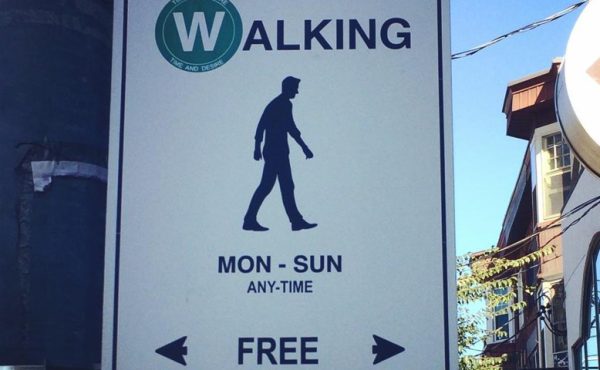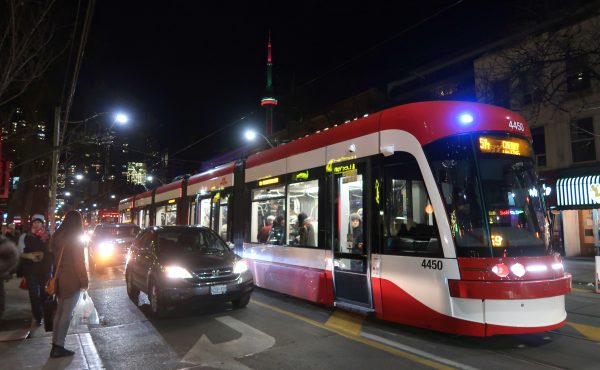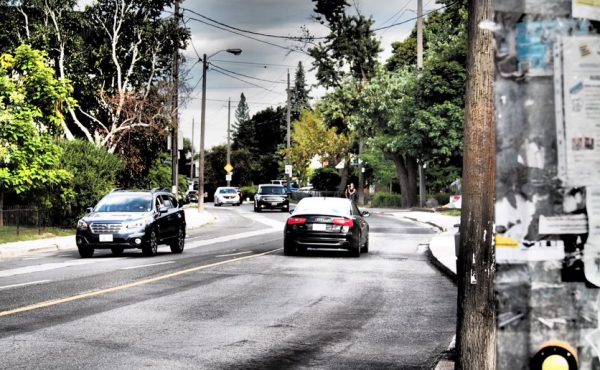Walking Toronto’s streets can be dangerous for any pedestrian, but it can be especially hazardous for the visually impaired.
The City has launched a pilot project at the corner of Victoria and Shuter to test different sidewalk surfaces to make it easier for pedestrians who are visually impaired to detect when they are nearing an intersection.
“This pilot project is a wonderful step to make our sidewalks more accessible to those with visual impairments, especially at key areas like intersection crossings,” said Councillor Kristyn Wong-Tam (Ward 27 Toronto Centre-Rosedale) in a release, who represents the area where the project is taking place. “I hope that many members of the public will provide feedback on the testing surfaces.”
Four surfaces featuring different treatments and colours have been installed at the corners of the intersection.
Janet Lo, a project officer with Toronto’s Transportation Services, said creating a warning system for intersections is a priority in advance of the new LRT vehicles set to hit the streets in 2014.
“The new vehicles will have accessibility features about 10 metres back from the front of the LRT. The middle doors will have a ramp for people in wheelchairs and scooters,” said Lo. “The sidewalk will need to have a curb cut in the sidewalk for people in wheelchairs to get off the sidewalk.”
Previously these curb cuts were marked using “linear grooves” or “slash marks.” According to Fiona Chapman, a manager with Toronto’s Transportation Services, it’s been shown that these markings can be confused with other cracks or joints in the sidewalk making it difficult for the visually impaired to tell the difference between a sidewalk and the beginning of a roadway.
“We met with the CNIB (Canadian National Institute for the Blind) and in their guide it was recommended a tactile warning system, known as truncated domes, be used” said Lo. “Over the last two years research indicates that truncated domes are the most consistently detected by people who are visually impaired or those using a guide dog.”
The truncated domes are also used as a warning system in Toronto’s subways (the yellow line on the subway platforms).
The City has now installed four surfaces featuring different materials and colours at the corners of the Victoria and Shuter intersection. Materials like plastic, cast iron and pavers (similar to brick or cement) are being tested to see which is most cost effective and how long they will last.
“We’re started running the project in November to test the surfaces during the winter,” said Jeffrey Climans, director of major capital infrastructure co-ordination for the City of Toronto. “We want to test the products in the freezing rain and snow. We also want to let the snow plows run over them during sidewalk clearing.”
The City is also asking for feedback from the public until the end of the project in May 2013.
“These warning systems are very important for people using a white cane,” said Peter Tesar, a Toronto resident who’s without sight and a member of the former Toronto Pedestrian Committee. “There’s always improvements that need to be made but you can’t replace all the sidewalks at once.”







